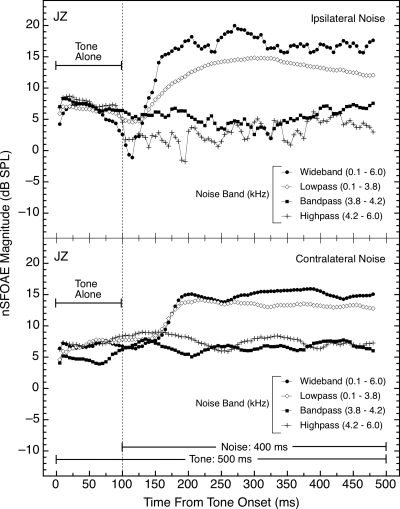Figure 7.
Magnitudes and time courses of the nSFOAE responses in the tone-plus-noise condition for different noise configurations. The data in the top panel were collected with the noise in the same ear as the tone (ipsilateral), and the data in the bottom panel were collected with the noise in the ear contralateral to the tone and the measured nSFOAE. These two types of triplets were interleaved within each test block. In the contralateral conditions, there was no immediate decline in nSFOAE magnitude with the onset of the wideband noise nor suppression of the nSFOAE with the onset of the highpass noise. For these conditions, the 4.0‐kHz tone was 60 dB and the spectrum levels of all the noise bands were fixed at 25 dB. Here only about 30 triplets were averaged for both the ipsilateral- and contralateral-noise conditions rather than the typical 50.

